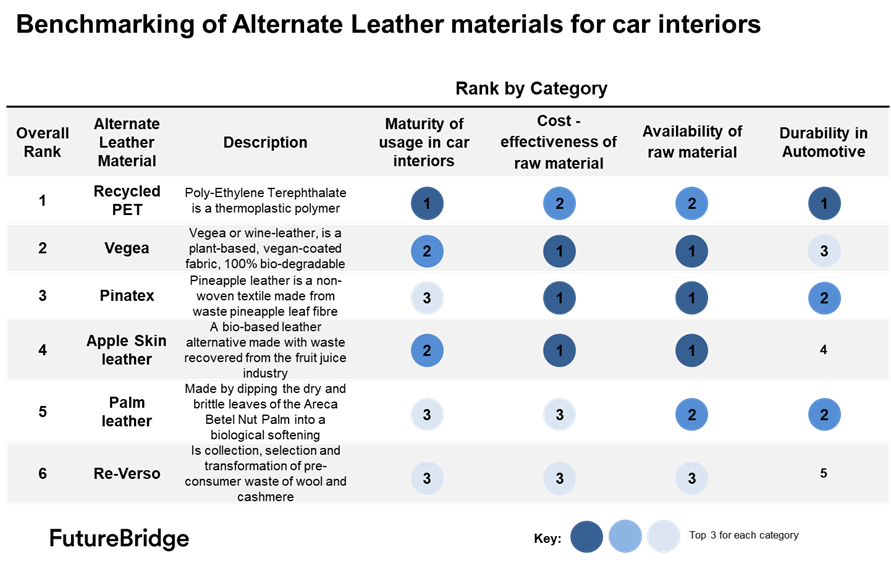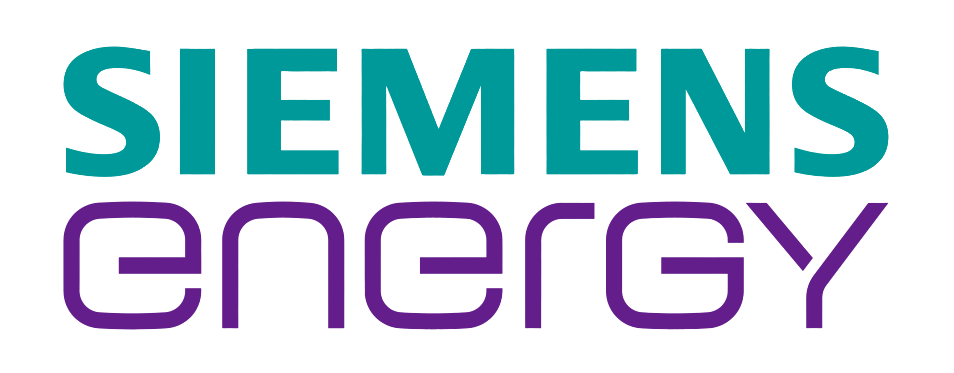FutureBridge : Recycled PET and Vegan leather could replace natural leather car interiors by 2030
FutureBridge’s benchmarking reveals that Recycled PET, Pinatex, and Vegea are well-suited to bridge the sustainability gap that natural leather car interiors face. However, higher adoption of alternate leather would require the expansion of their supply chain and the shift of consumer preferences away from natural leather.
“The fitment of alternate leather in car interiors forms part of a multipronged sustainability strategy that car manufacturers have started implementing to meet their carbon-neutral goals. This strategy now expands from electrification and energy decarbonization to cover materials circularity; i.e. the use of 100% renewable and recyclable materials to enable the recovery of energy resources and close material loops”, said Georgios Stathousis, Manager at FutureBridge’s Mobility Practice.
Recycled PET, Pinatex, and Vegea topped FutureBridge’s ranking of Alternate Leather
FutureBridge benchmarked six alternate leather materials that hold strong potential to bridge the sustainability gap that natural leather car interiors face. FutureBridge examined Palm leather, Re-Verso, Pineapple leather, Apple skin leather, Recycled PET, and Vegea across thirteen parameters in four major categories: durability, availability of raw material, the cost-effectiveness of raw material, and maturity of usage in car interiors.
- Recycled Polyethylene terephthalate (PET) ranked first overall because of its superiority in two out of the four benchmarking parameters, i.e. maturity of usage in car interiors and durability. Audi, BMW, Volvo, Porsche, and Ford have already been using this material mainly due to its strong performance in the categories of cost, tensile strength, melting point, safety, and tear resistance. However, sourcing recycled PET is a challenge for carmakers today. What’s more, the raw materials for PET are non-renewable resources, which raises concerns over their availability in the long term.
- Plant-based leather already features in modern car interiors, such as Eucalyptus Melange upholstery in Land Rover’s Evoque, but at a smaller scale compared to PET. In our ranking, plant-based alternate leather materials also score lower in durability, compared to PET.
- Vegea or wine leather ranked second, behind Recycled PET. Vegea contains only plant-based raw materials that make it 100% biodegradable. Vegea benefits from low production cost and high availability of raw material but its durability score was lower than Pinatex.
- Pineapple leather or Pinatex ranked third. Its leadership position in the cost-effectiveness of raw material and availability of raw material were offset by lower scores in maturity and durability compared to PET.
FutureBridge expects that cross-industry collaborations for materials circularity will intensify in the near term, particularly for Recycled PET that is gaining interest from carmakers but is not widely available today.
- Partnerships between beverage conglomerates using PET in bottles with carmakers could help recycled PET proliferate in modern car interiors by 2030.
- Finally, collaborations between fashion designers and car manufacturers to make attractive vegan-based, sustainable leather upholstery leveraging its versatility could challenge natural leather’s position as a signature of luxury for car interiors.
###
For Interviews/more Information: media@futurebridge.com
Our Clients
Our long-standing clients include some of the worlds leading brands and forward-thinking corporations.
- © 2021 Cheers Interactive (India) Private Limited. All rights reserved. FutureBridge ® is a registered trademark of Cheers Interactive (India) Private Limited.


































